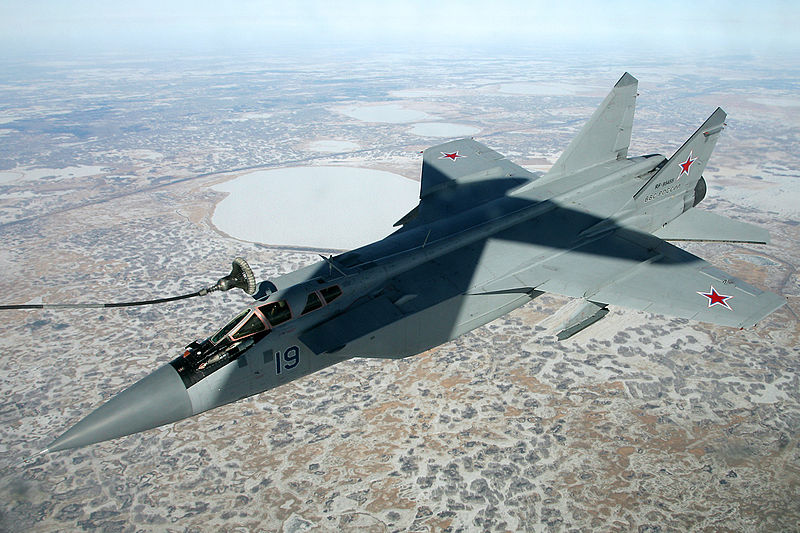A U.S. Navy P-8 Poseidon was intercepted by a MiG-31 near the Kamchatka peninsula.
On Apr. 21, a Russian Air Force MiG-31 jet intercepted a U.S. P-8 Poseidon maritime patrol aircraft flying in international airspace near Kamchatka Pensinsula, in Russia’s Far East, where a firing range used also to test intercontinental ballistic missiles launched from Borei-class strategic nuclear submarines is located.
The Russian Soviet-design supersonic interceptor flew within 15 meters of the U.S. Navy reconnaissance plane but unlike some of the previous “close encounters”, the interception was conducted in a “safe and professional” manner according to Cmdr. Dave Benham, a spokesman for the Pacific Command, who spoke to the Washington Free Beacon.
Indeed, the incident occurred one week after a U.S. Air Force RC-135 electronic intelligence gathering aircraft flying a routine mission (in international airspace) over the Baltic Sea was intercepted by a Russian Su-27 that barrel rolled over the American spyplane.
Few days earlier, Russian Su-24s performed several low passes over a U.S. destroyer in the Baltic Sea, whereas on Jan. 25, 2016 a U.S. RC-135 intelligence gathering jet was intercepted by a Russian Su-27 Flanker fighter jet over Black Sea that made an aggressive turn that disturbed the controllability of the Rivet Joint.
On Apr. 7, 2015 another Su-27 flew within 20 feet of an RC-135U, over the Baltic Sea.
On Apr. 23, 2015 a U.S. Air Force RC-135U performing a routine surveillance mission over the Sea of Okhotsk, north of Japan, some 60 miles off eastern Russia was intercepted by a Russian Su-27 Flanker that crossed the route of the U.S. aircraft putting itself within 100 feet of the Combat Sent.
What’s newsworthy this time is the fact that the interception was conducted by one of the world’s fastest interceptor on one of the newest U.S. reconnaissance planes.
The Poseidon is a derivative of the Boeing 737, incorporating a 737-800 series fuselage mated to 737-900 wings and featuring raked winglets to improve low-altitude fuel burn. The aircraft can carry the Mk-54 airborne ASW torpedo and the Harpoon anti-ship missile. The aircraft is also an intelligence gathering asset offering greatly improved communications and connectivity in comparison with the P-3C Orion.
On the other side, the MiG-31 Foxhound is a two-seat MiG-25 Foxbat derivative in service since 1983.
Whilst the MiG-25 was built as a high-speed, high-altitude interceptor, capable of reaching the speed of Mach 3.2 to intercept American B-58 and B-70 bombers, the MiG-31 was designed to intercept the B-1B bomber, which was designed to operate at low-level, below the radar coverage.
Hence the MiG-31 has quite good low-level capabilities (which MiG-25 does not) and is equipped with an advanced radar with look-down-shoot-down capability (needed to detect low-flying bombers), and data bus, allowing for coordinated attack with other fighters.
Although the MiG-31 is quite obsolete, it is still one of the most amazing interceptors ever built, with top speed of Mach 2.83 and a range of 1,450 km. The production of the MiG-31 ended in the early 1990s, but the interceptor is being upgraded to extend its operative life up to the 2028 – 2030. Until a replacement is available the MiG-31 will remain one the world’s fastest tactical fighter in active service to defend the Russian airspace.









